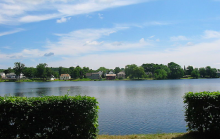Talking Rural Broadband, the Internet, and Media with Dr. Christopher Ali - Broadband Bits Podcast 355

The Austin, Texas, 2019 Broadband Communities Summit was about a month ago, but we’re still enjoying the experience by sharing Christopher’s onsite podcast interviews. This week, he and University of Virginia Assistant Professor Christopher Ali have an insightful conversation about rural broadband, media, and the Internet — and we get to listen in.
Dr. Ali works in the University Department of Media Studies and has recently published a piece in the New York Times titled, “We Need A National Rural Broadband Plan.” In the interview, he and Christopher discuss the op-ed along with Dr. Ali’s suggestions for ways to improve federal involvement in expanding rural connectivity. In addition to structural issues of federal agencies that affect the efficiency of rural expansion, Dr. Ali discusses the advantages he sees from a single-entity approach.
The two also get into a range of other topics, such as the importance of broadband to help deliver a range of media, especially in rural areas where local media outlets are disappearing.
Read Dr. Ali's op-ed here and order his book, Media Localism: The Politics of Place from the University of illinois Press to learn more.
This show is 28 minutes long and can be played on this page or via Apple Podcasts or the tool of your choice using this feed.
Transcript below.
We want your feedback and suggestions for the show-please e-mail us or leave a comment below.
Listen to other episodes here or view all episodes in our index. See other podcasts from the Institute for Local Self-Reliance here.
Thanks to Arne Huseby for the music. The song is Warm Duck Shuffle and is licensed under a Creative Commons Attribution (3.0) license.


